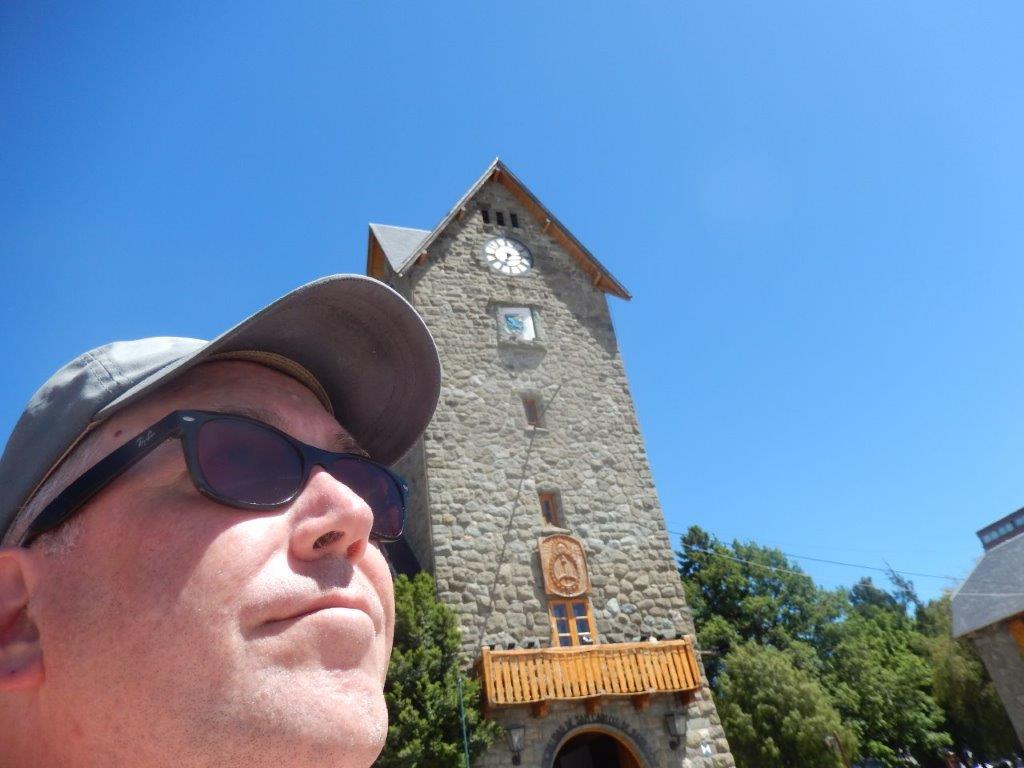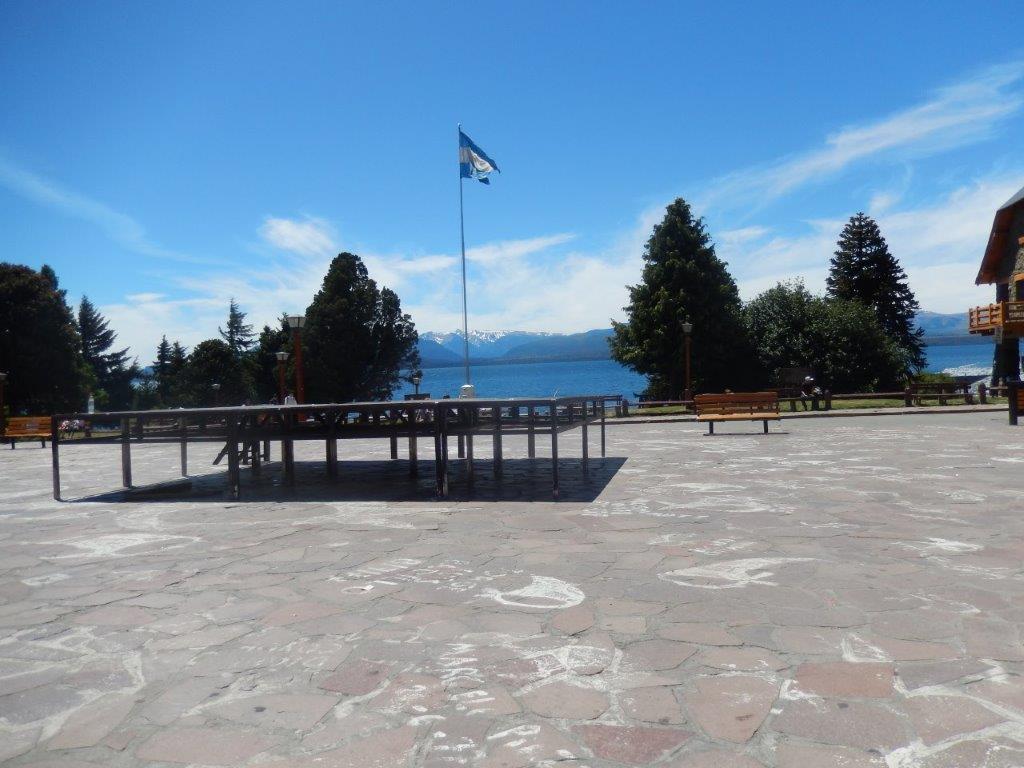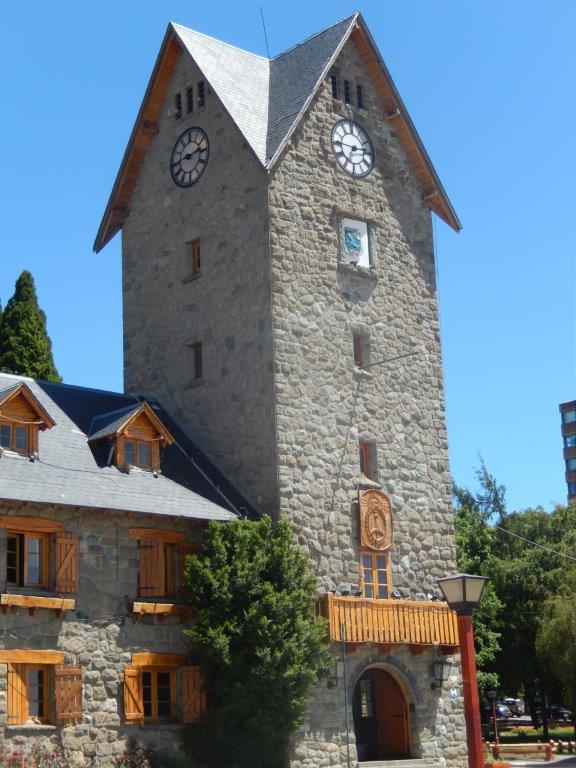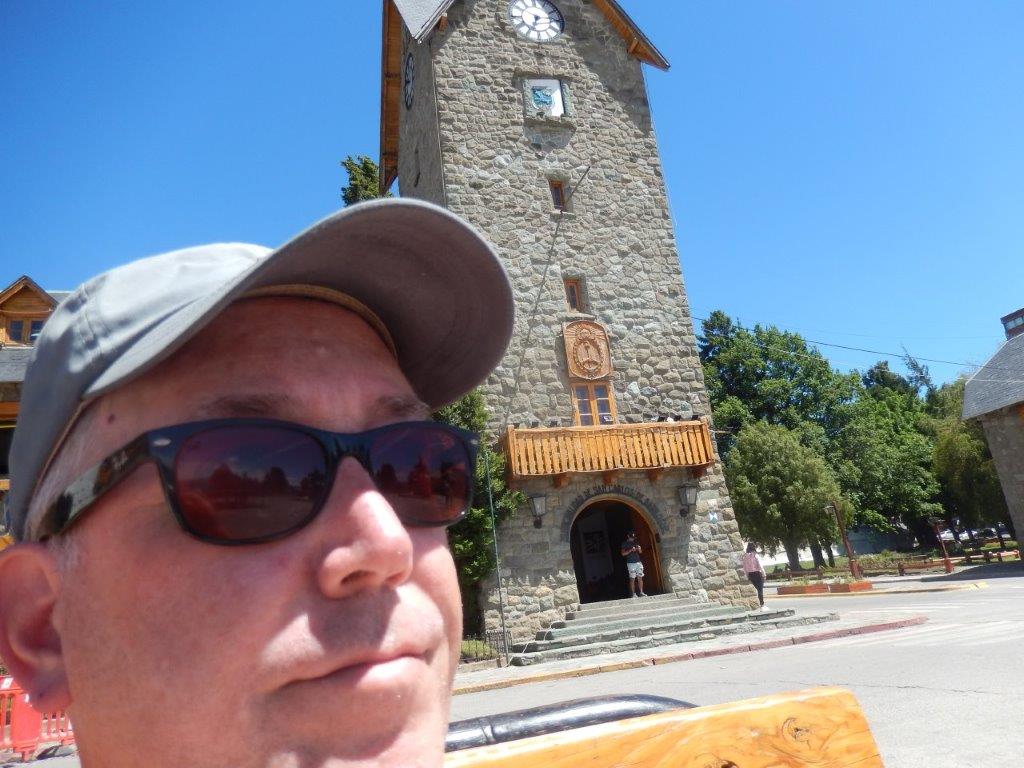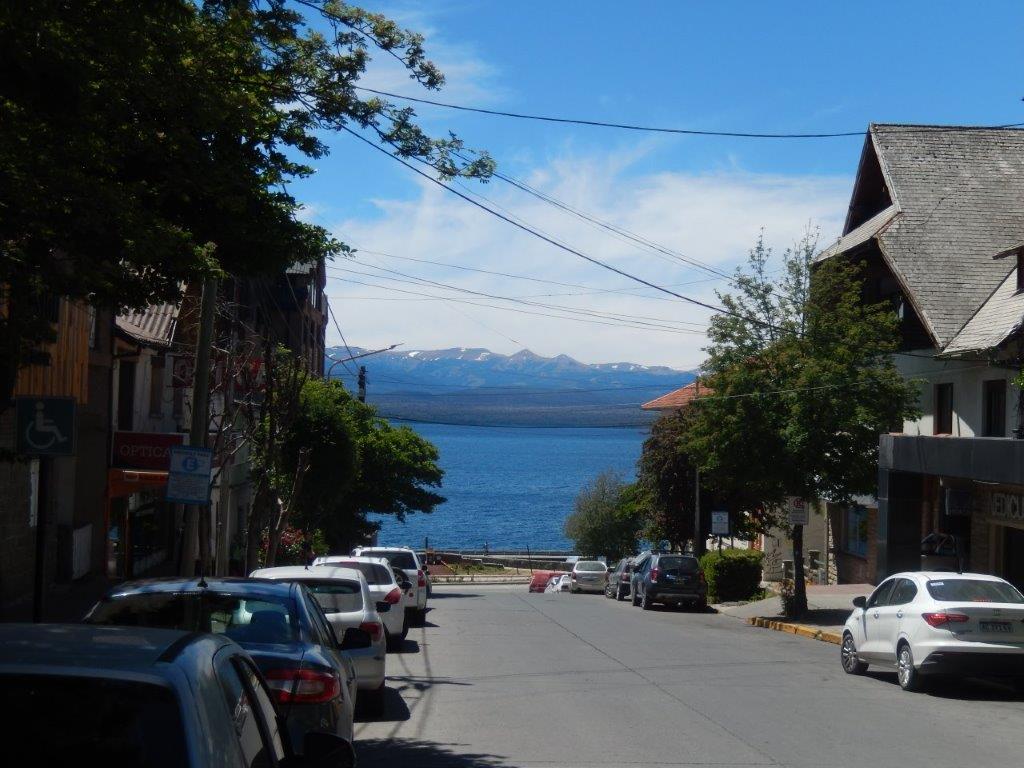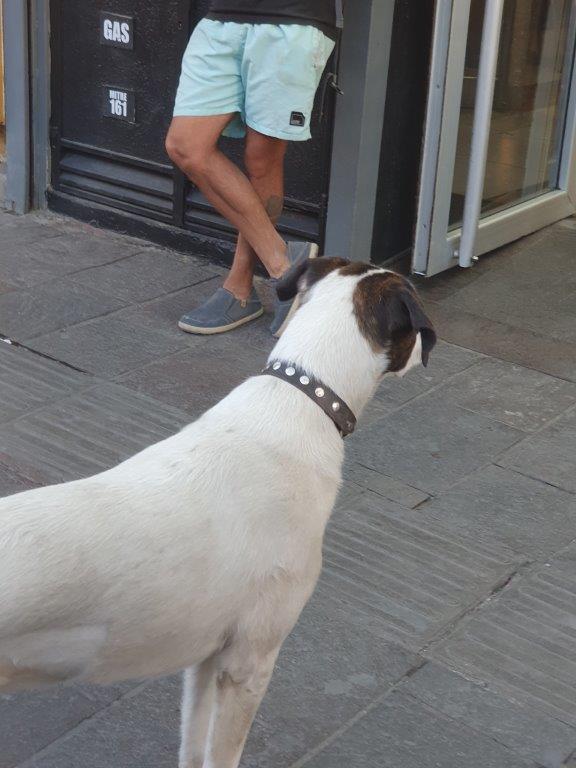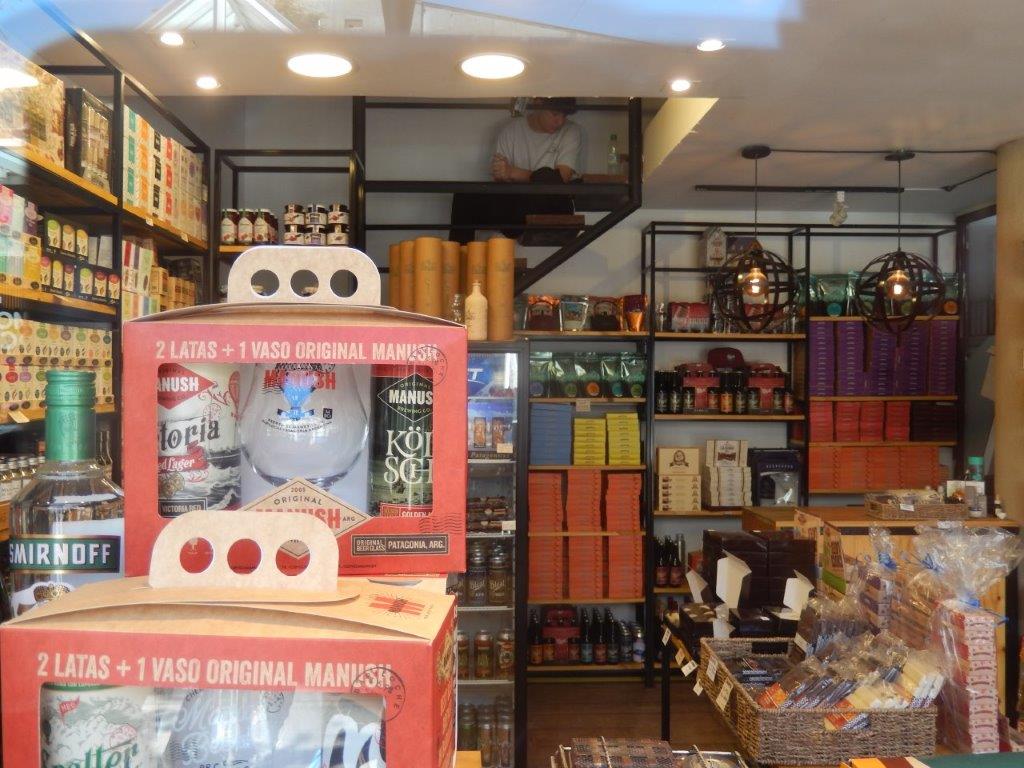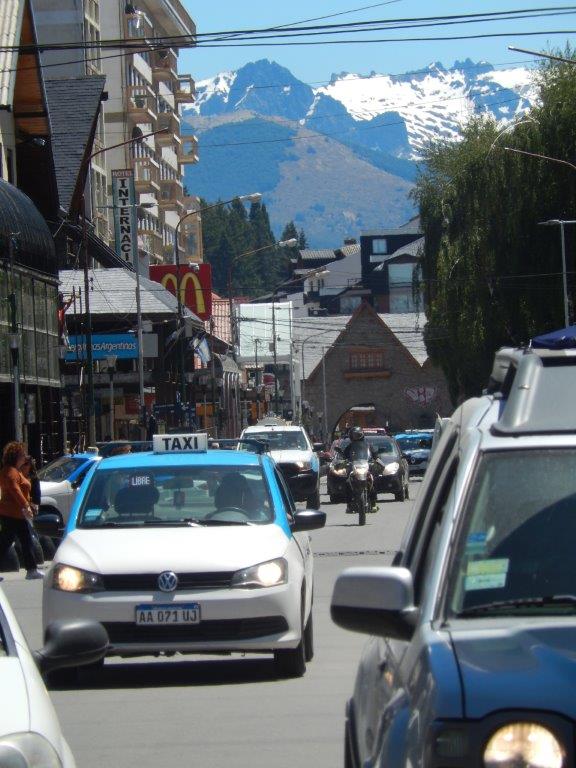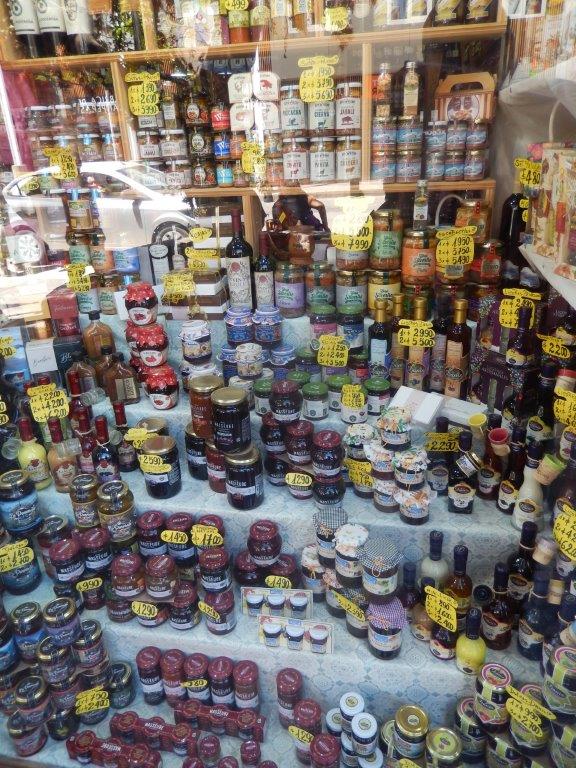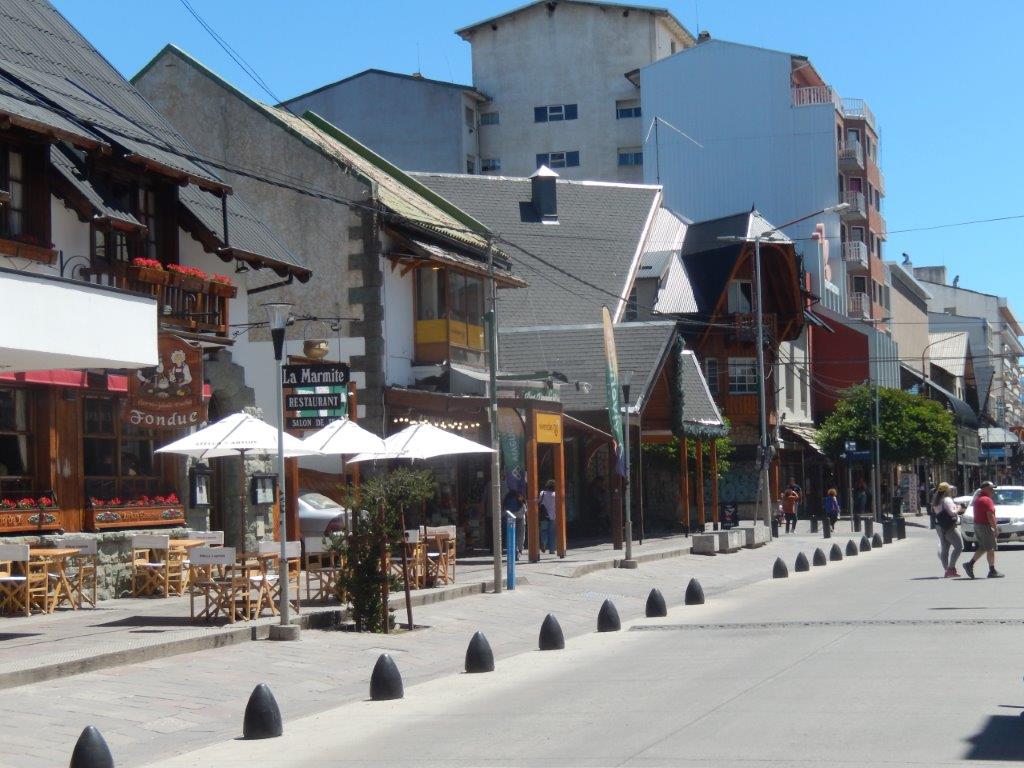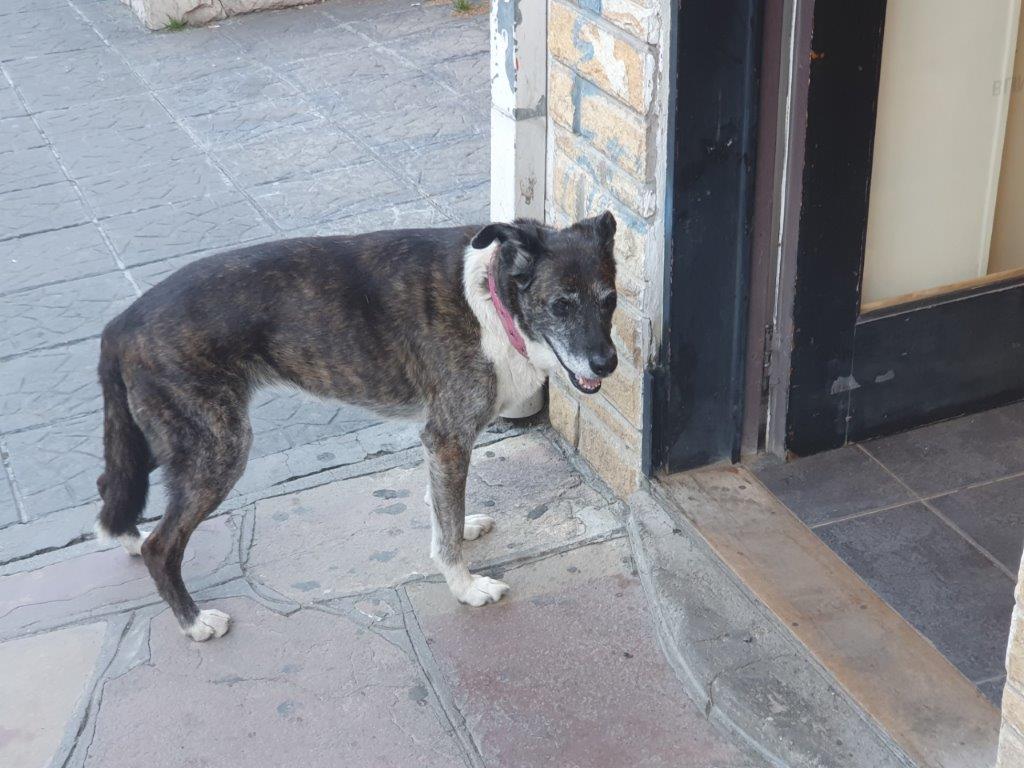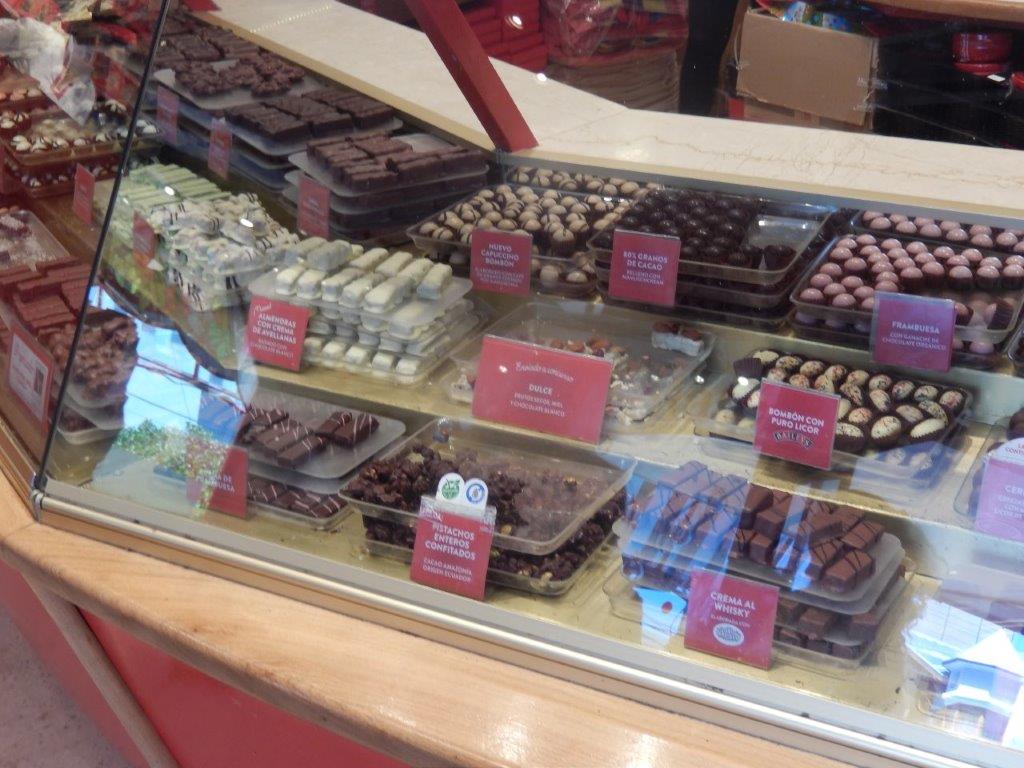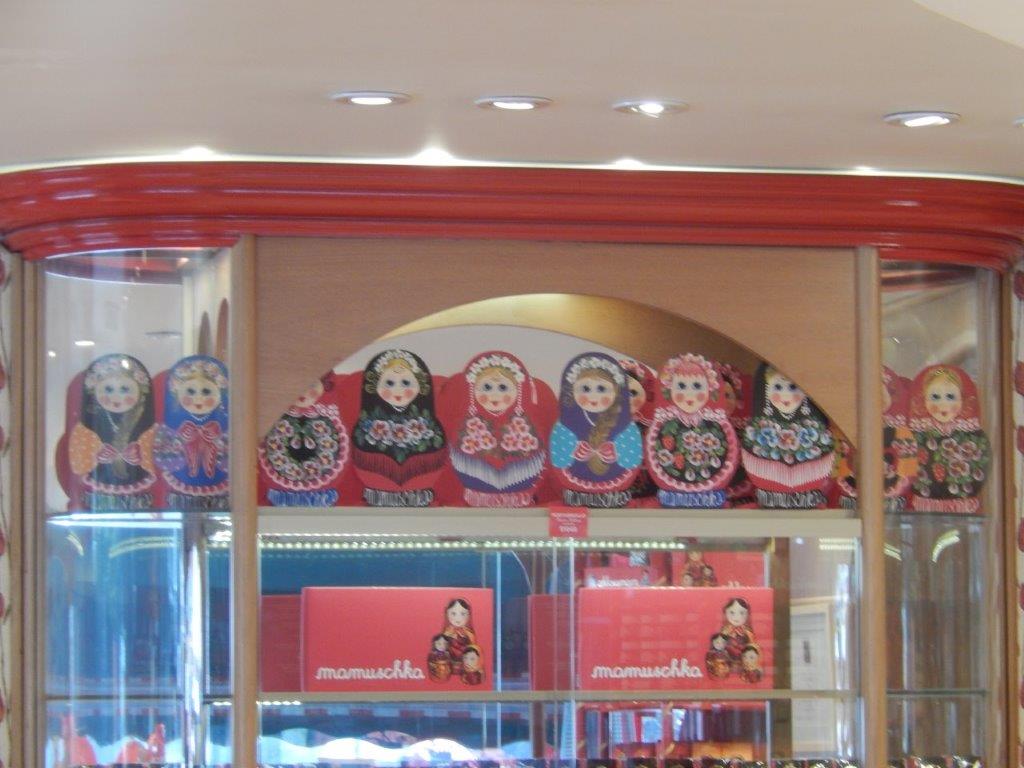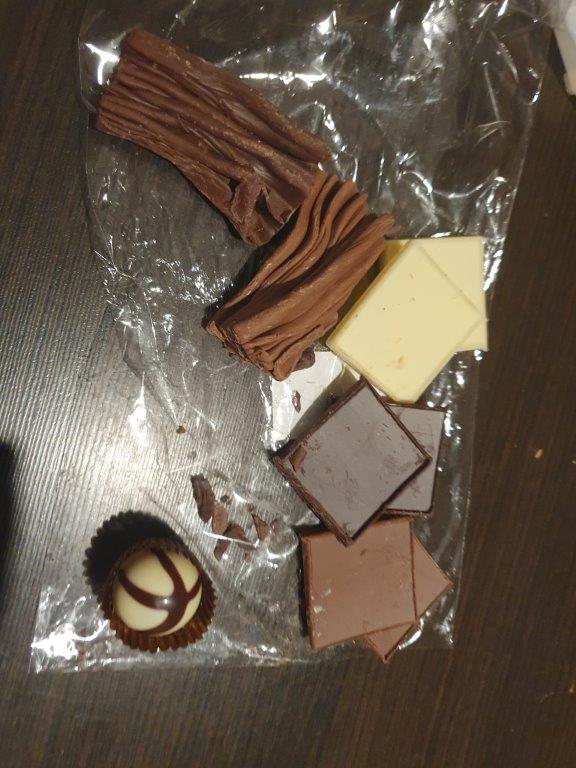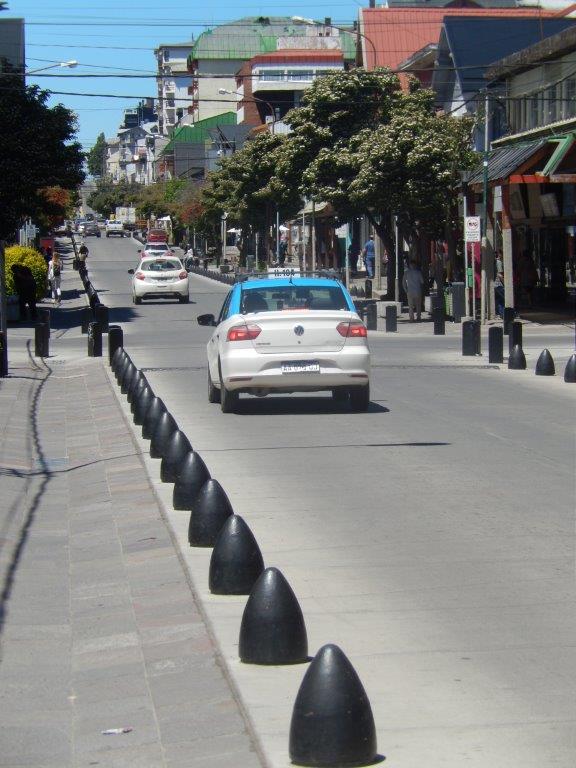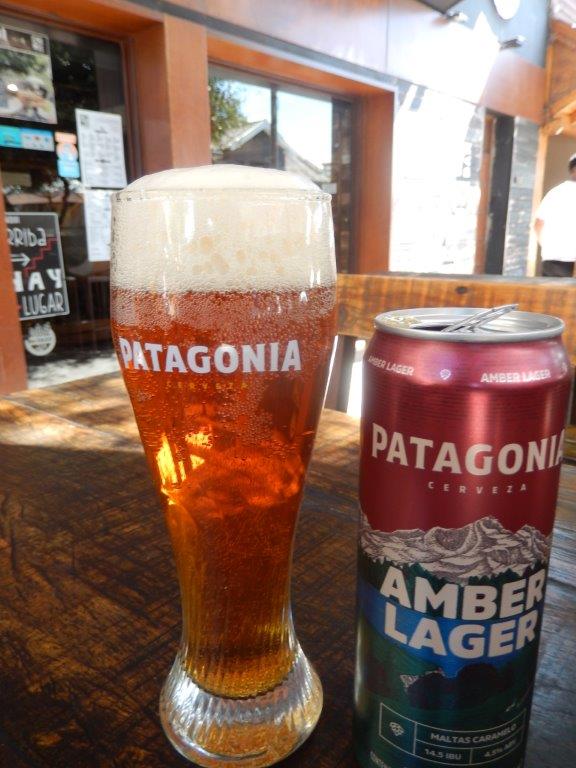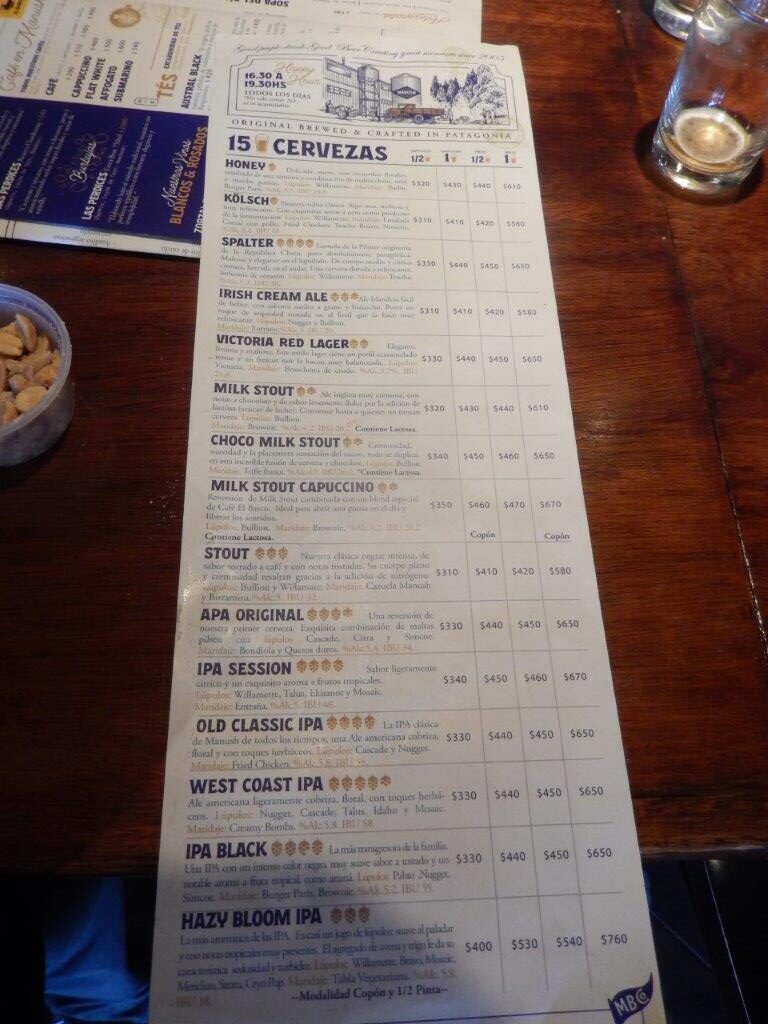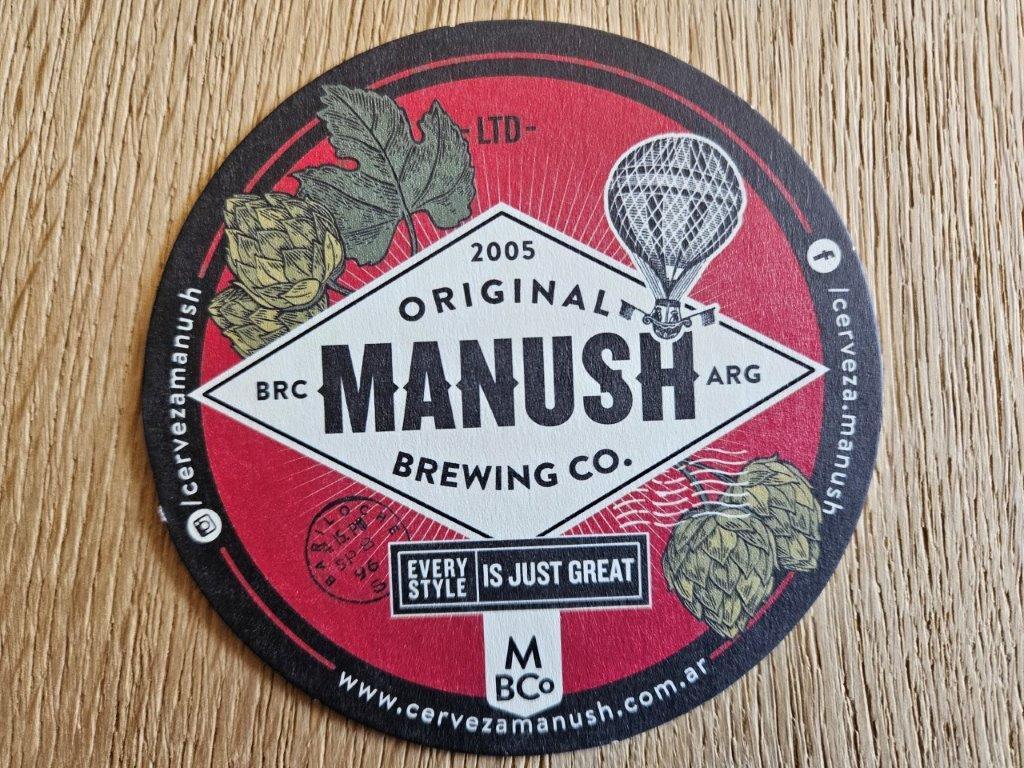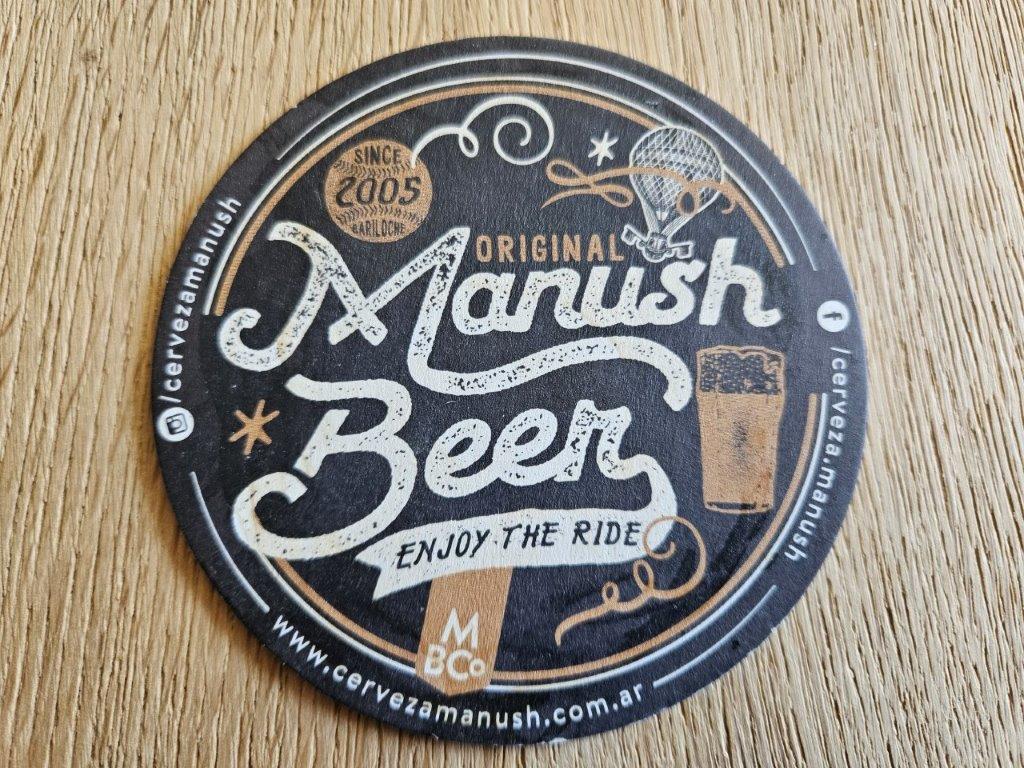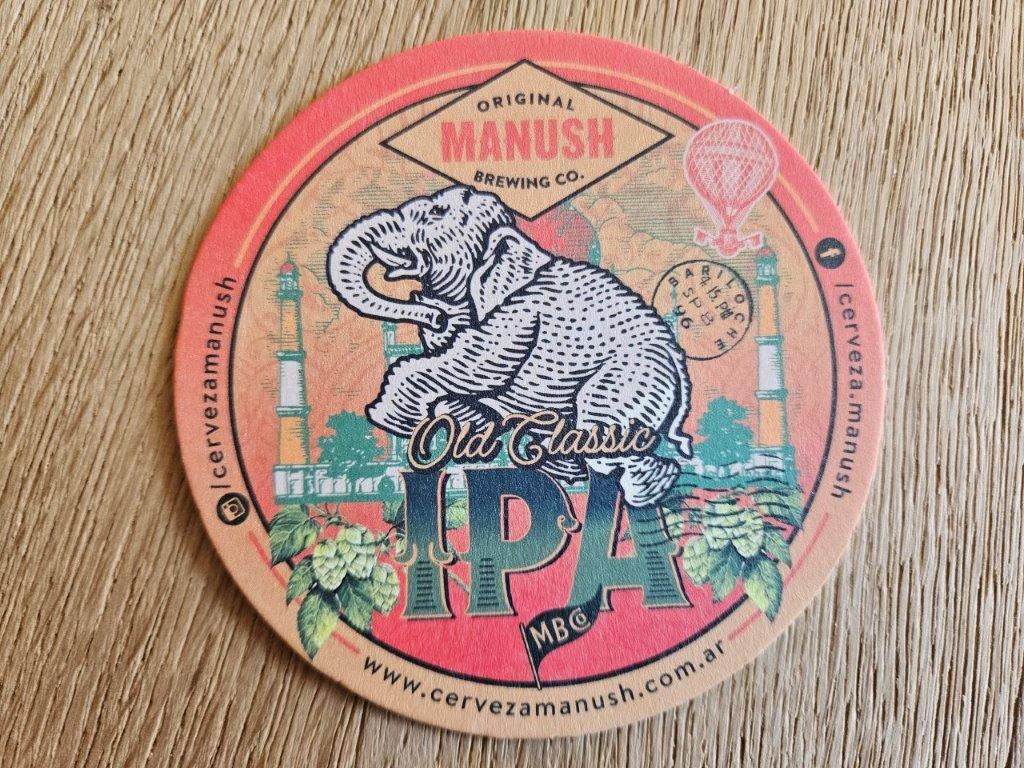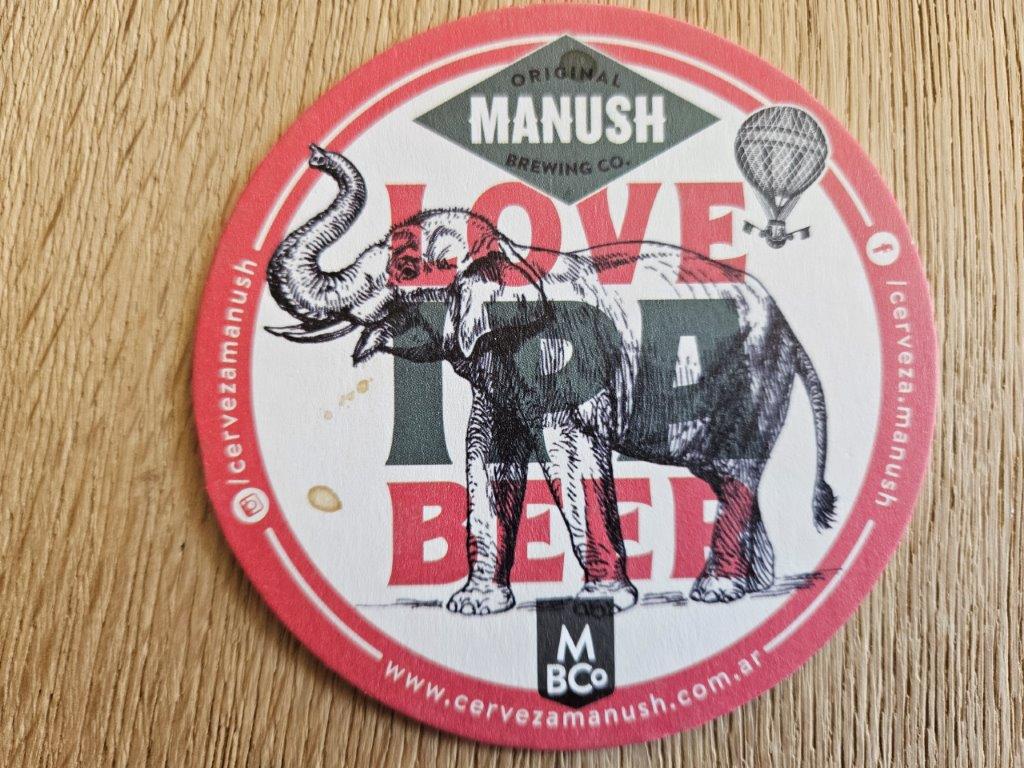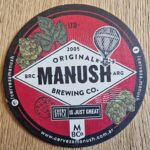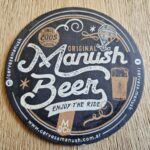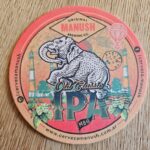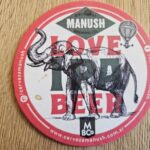20. Argentina: A city walk through San Carlos de Bariloche (Nahuel Huapi National Park)
San Carlos de Bariloche, as it is officially known or Bariloche, is a city in the province of Río Negro, Argentina, situated in the foothills of the Andes on the southern shores of Nahuel Huapi Lake. It is located within the Nahuel Huapi National Park. After development of extensive public works and Alpine-styled architecture, the city emerged in the 1930s and 1940s as a major tourism centre with skiing, trekking and mountaineering facilities. In addition, it has numerous restaurants, cafés, and chocolate shops. The city had a permanent population of 108,205 according to the 2010 census. According to the latest statistics from 2015, the population is around 122,700, and a projection for 2020 estimates 135,704.
Central Square
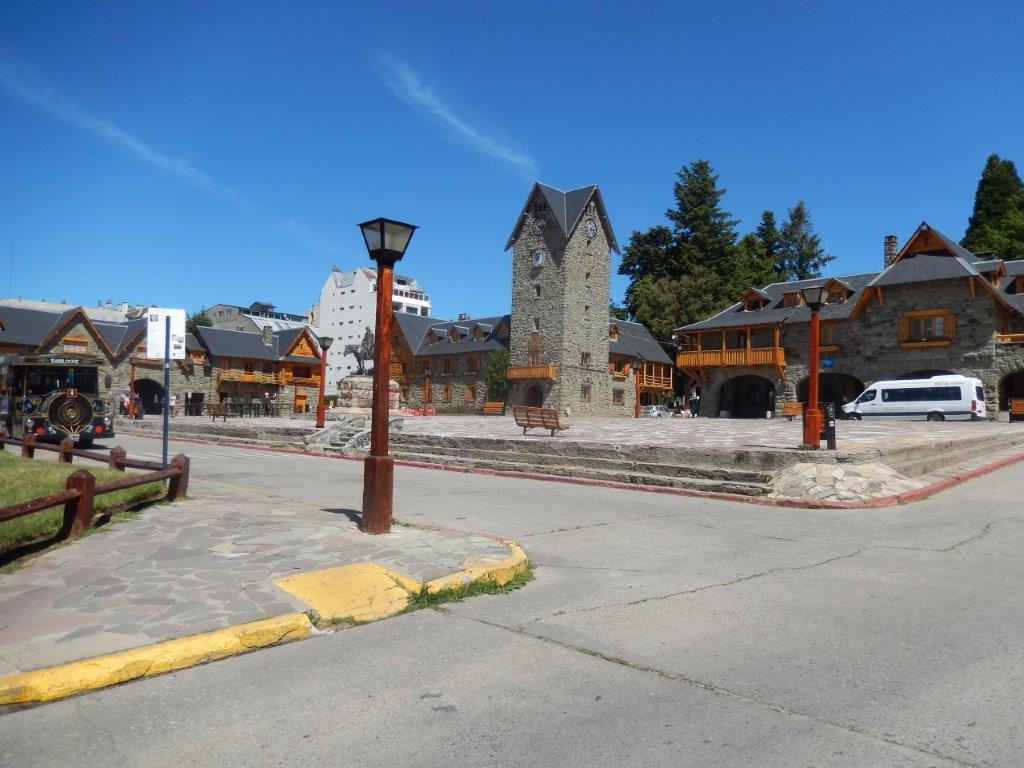 History-wise, the most interesting period for modern Bariloche, was the start of the 19th to about 1895.
History-wise, the most interesting period for modern Bariloche, was the start of the 19th to about 1895.
The area had stronger connections to Chile than to the distant city of Buenos Aires during most of the 19th century, but the explorations of Francisco Moreno and the Argentine campaigns of the Conquest of the Desert established the legitimacy of the Argentine government. It thought the area was a natural expansion of the Viedma colony and the Andes were the natural frontier to Chile. In the 1881 border treaty between Chile and Argentina, the Nahuel Huapi area was recognized as part of Argentina.
German settlers begun to arrive in neighboring southern Chile from the 1840s. Some of these settlers and their descendants begun a lucrative leather industry obtaining leather from indigenous communities across the Andes. In the 1880s, the Argentine Army displaced indigenous communities, disrupting this trade and forcing leather merchants in Chile to cross the Andes to obtain supplies. This way numerous entrepreneurs from Chile, many with a German background, established cattle and trade business in the area of Nahuel Huapi and Lácar lakes.
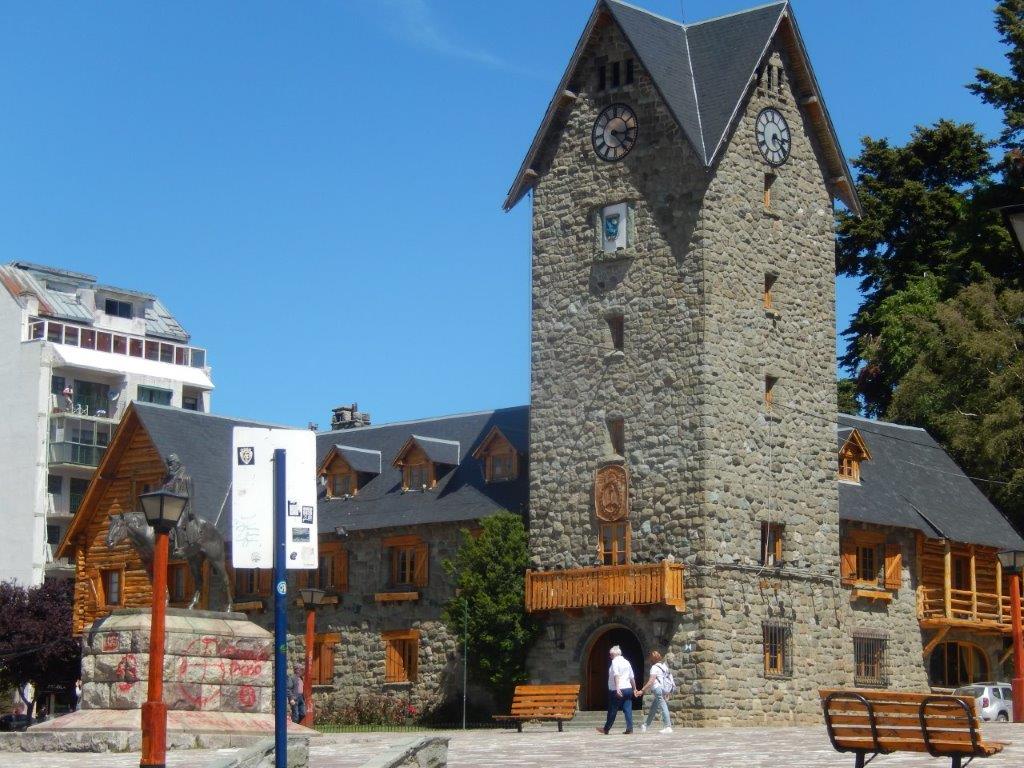 The Wandelgek sat down on a bench in front of the City Civic Center for a while and looked around, enjoying the sun…
The Wandelgek sat down on a bench in front of the City Civic Center for a while and looked around, enjoying the sun…
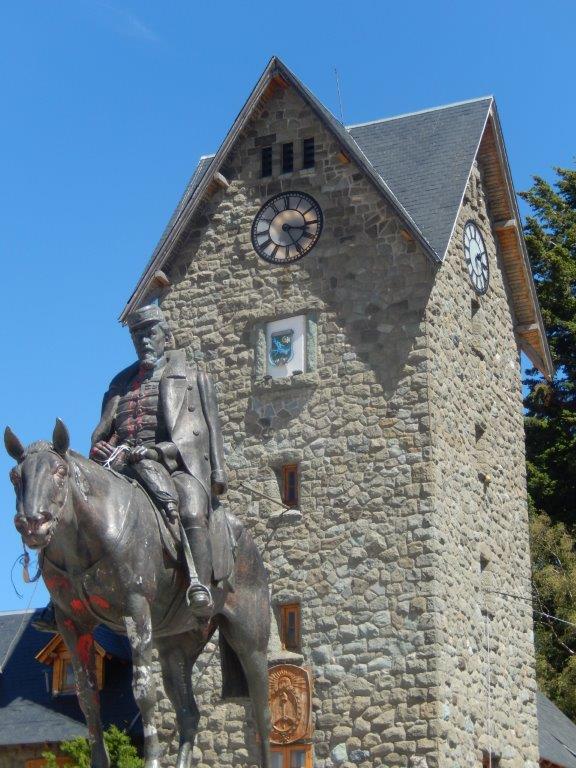 There is a story behind that horseman who looks towards the Nahuel Huapi lake, in the middle of the Civic Center of Bariloche. General Julio A. Roca is an old acquaintance in Patagonia: he was responsible for the campaign into the desert and for incorporating an immense unexploited territory into the country. During his first presidency he converted the government of Patagonia into National Territories, creating those of La Pampa, Río Negro, Neuquén, Chubut, Santa Cruz and Tierra del Fuego. And thanks to his political roll, he unlocked the rocky relations with Chile, when Argentina was about to go to war over border issues.
There is a story behind that horseman who looks towards the Nahuel Huapi lake, in the middle of the Civic Center of Bariloche. General Julio A. Roca is an old acquaintance in Patagonia: he was responsible for the campaign into the desert and for incorporating an immense unexploited territory into the country. During his first presidency he converted the government of Patagonia into National Territories, creating those of La Pampa, Río Negro, Neuquén, Chubut, Santa Cruz and Tierra del Fuego. And thanks to his political roll, he unlocked the rocky relations with Chile, when Argentina was about to go to war over border issues.
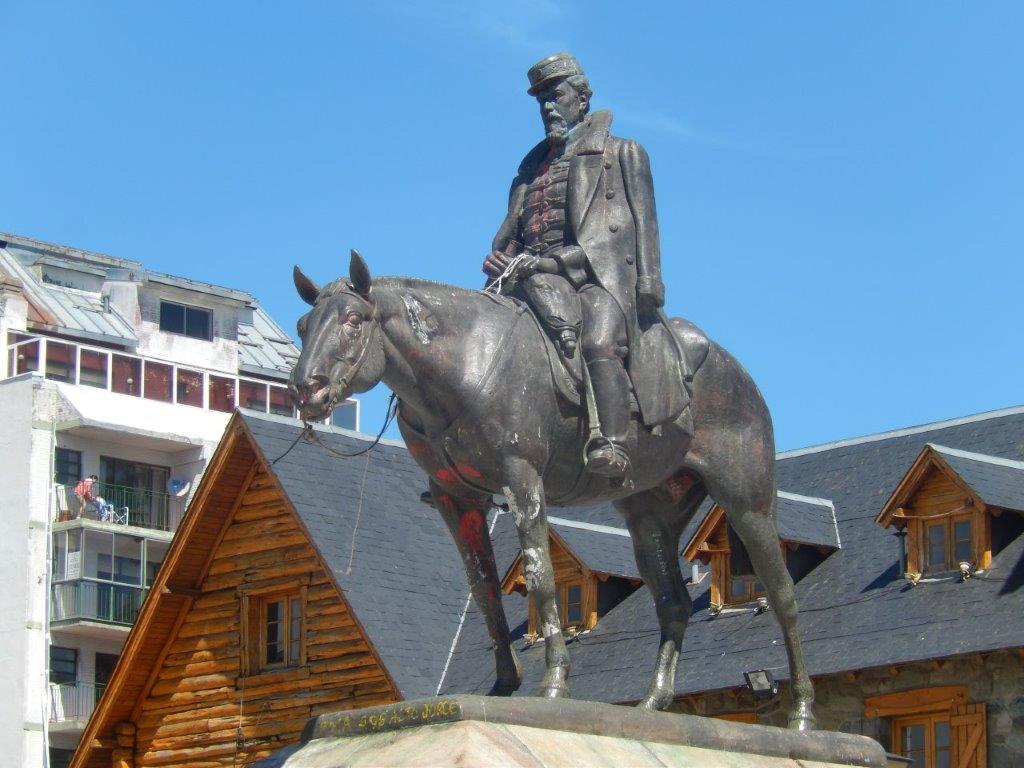
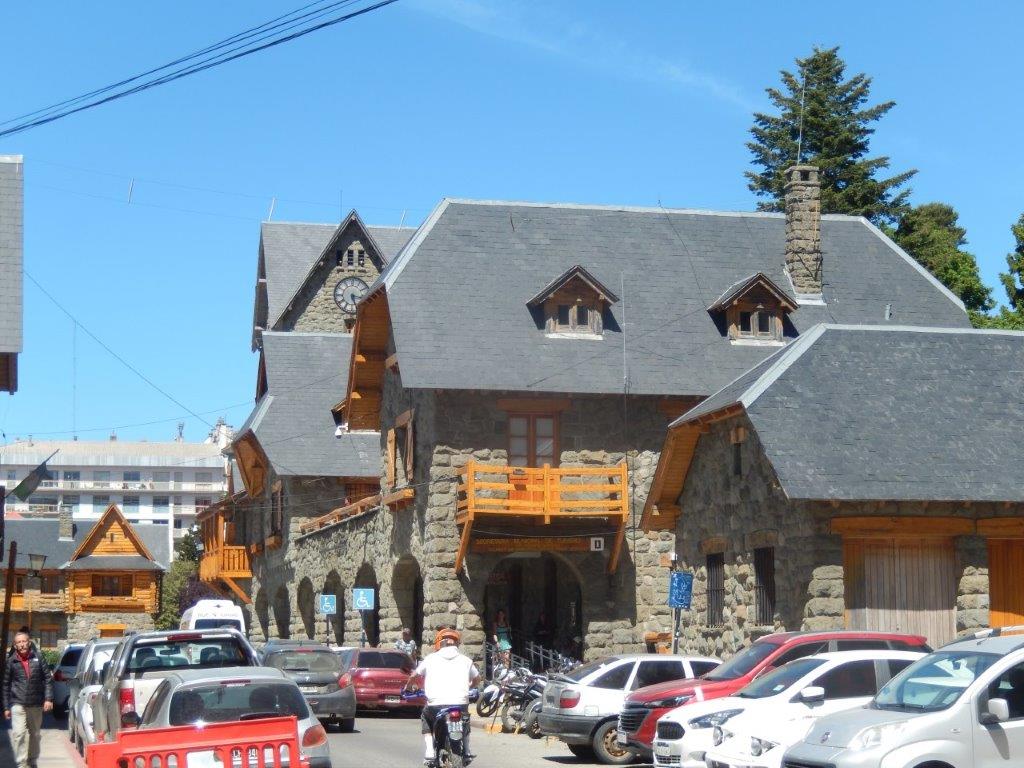 Bariloche’s main square is the reference point to see in the Centro Cívico, with its characteristic slab stone floor, surrounded by low constructions with the typical stone and wood construction of this area. Among the constructions, it is worth mentioning the City Hall Building, the Tourist Office and the Patagonia Museum. Since it is at a height with respect to Lake Nahuel Huapi and has no buildings on the north side, the lake can be seen from the square itself with the peace and quiet of sitting on a bench. In the middle of the square is the statue of General Julio A. Roca on horseback. On the east side, there are two large stone arches giving access to Mitre Street, the main artery of downtown Bariloche.
Bariloche’s main square is the reference point to see in the Centro Cívico, with its characteristic slab stone floor, surrounded by low constructions with the typical stone and wood construction of this area. Among the constructions, it is worth mentioning the City Hall Building, the Tourist Office and the Patagonia Museum. Since it is at a height with respect to Lake Nahuel Huapi and has no buildings on the north side, the lake can be seen from the square itself with the peace and quiet of sitting on a bench. In the middle of the square is the statue of General Julio A. Roca on horseback. On the east side, there are two large stone arches giving access to Mitre Street, the main artery of downtown Bariloche.
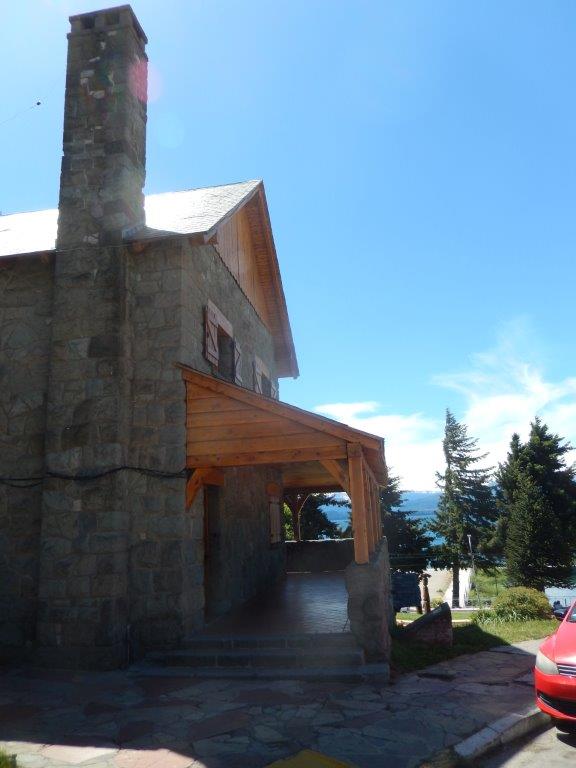 The partly stone partly wooden buildings around the central square give the town its Suisse/Alpine character. The one beneath houses a souvenir shop…
The partly stone partly wooden buildings around the central square give the town its Suisse/Alpine character. The one beneath houses a souvenir shop…
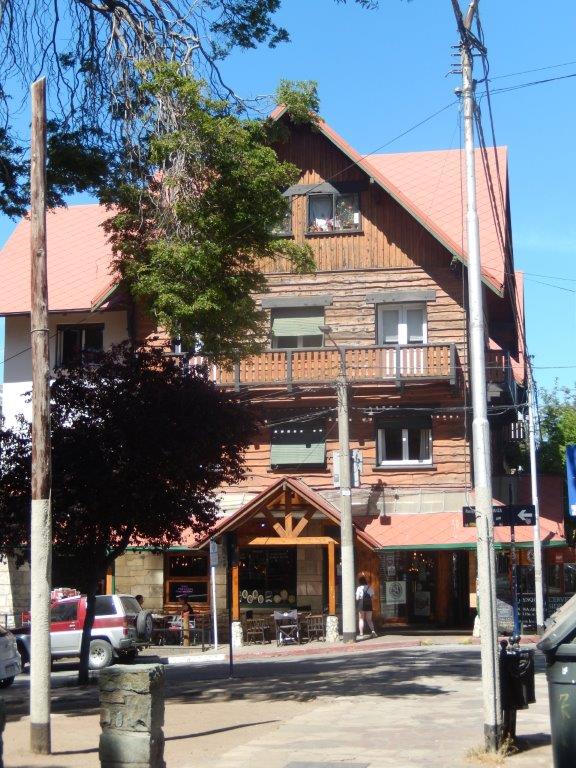 The building beneath is the harbor facility building of Puerto San Carlos and looks over clear blue Lake Nahuel Huapi.
The building beneath is the harbor facility building of Puerto San Carlos and looks over clear blue Lake Nahuel Huapi.
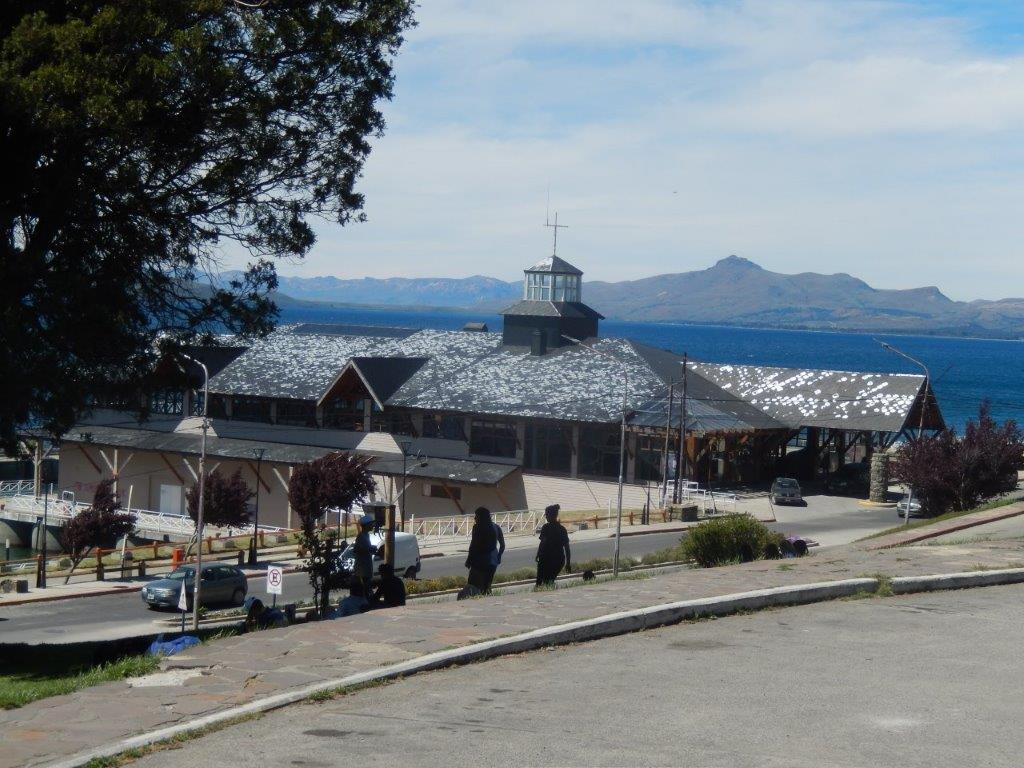 Beneath are the double arches which give access to Mitre Street. They are part of the Civic Center…
Beneath are the double arches which give access to Mitre Street. They are part of the Civic Center…
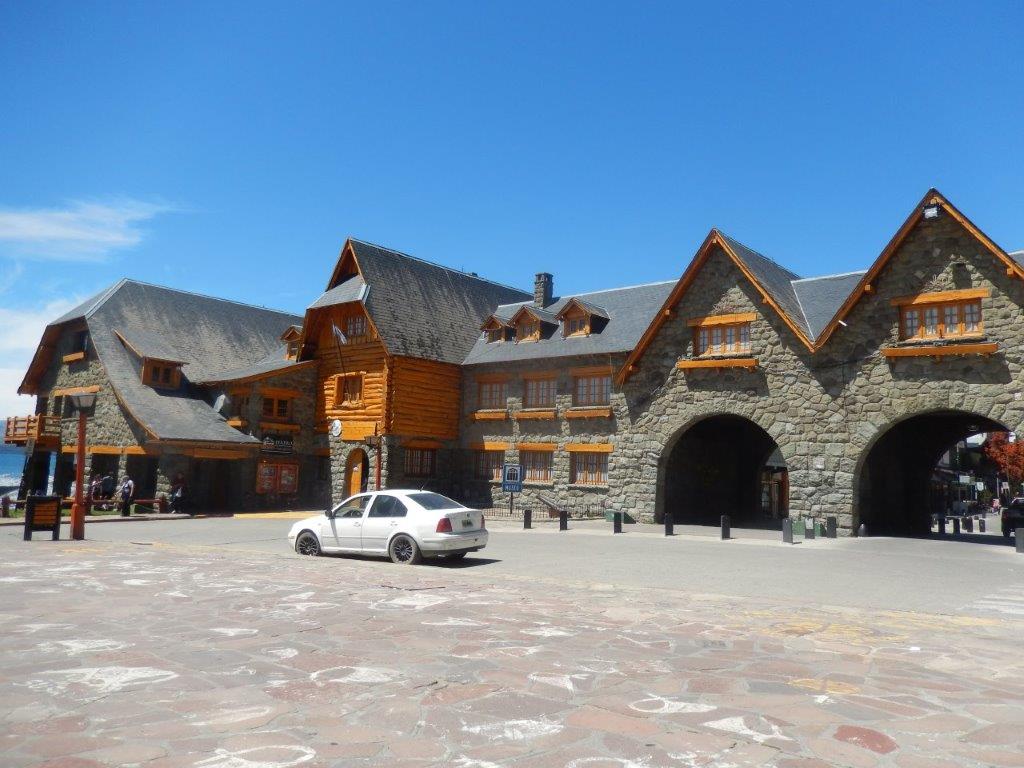 Next is the Museo Patagonica, which is also part of the Civic Center buildings…
Next is the Museo Patagonica, which is also part of the Civic Center buildings…
See my previous blogpost on the Museum ‘s exhibitions at:
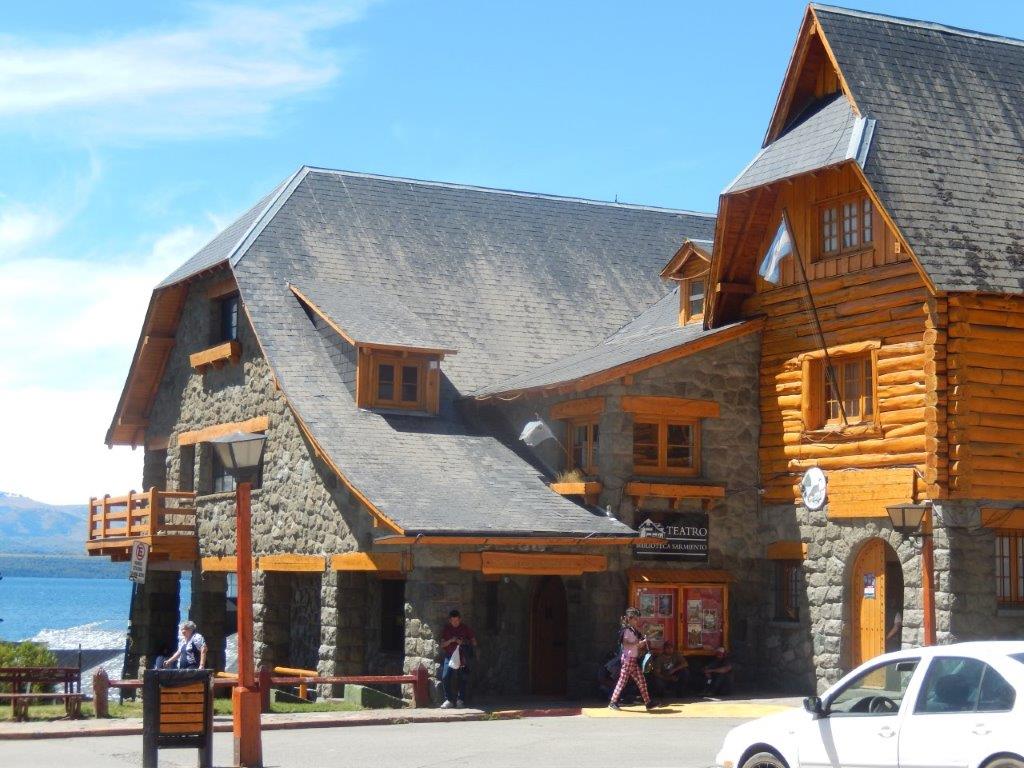 Meanwhile, The Wandelgek was enjoying his break and sitting in the sun, looking around at all this beautiful architecture…
Meanwhile, The Wandelgek was enjoying his break and sitting in the sun, looking around at all this beautiful architecture…
Lake Nahuel Huapi
Nahuel Huapi Lake (Spanish: Lago Nahuel Huapí) is an Andean lake in the lake region of northern Patagonia between the provinces of Río Negro and Neuquén, in Argentina. The lake has a northwest-southeast elongated shape and complex geography with several branches, peninsulas and islands. The city of Bariloche is on the southern shore of the lake and the town of Villa La Angostura lies on its northwestern shores. The lake is wholly inside Nahuel Huapi National Park. It is one of the largest lakes in northern Patagonia. It is drained by Limay River and it is part of the watershed of Negro River which discharges into the South Atlantic.
Additionally, the northwest shore of the lake is the site of an isolated house sometimes alleged to have been occupied by Nazi dictator Adolf Hitler following his purported escape from Berlin in April 1945.
Nahuel Huapi lake, located within the Nahuel Huapi National Park, has a surface of 530 km2 (200 sq mi), rests 770 metres (2,510 ft) above the sea level, and has a maximum measured depth (as of 2007) of 464 metres (1,522 ft).
Its seven branches are named Blest (36 km2 or 14 sq mi), Huemul (21.5 km2 or 8.3 sq mi), de la Tristeza (18.5 km2 or 7.1 sq mi), Campanario (7.9 km2 or 3.1 sq mi), Machete, del Rincón and Última Esperanza. It is connected to other smaller lakes such as Gutiérrez, Moreno, Espejo and Correntoso. The deep-blue waters hold a number of islands, most notably Isla Victoria with an area of 31 km2 (12 sq mi), and Isla Huemul on the south end of the lake.
The lake’s crystal clear waters are very susceptible to climate changes and have an average surface temperature of 7 °C (45 °F); this makes it both beautiful and treacherous. Hypothermia is one of the risks bathers must undertake. Kayaking is a popular sport on this and adjacent lakes. The lake is also the starting point of the Limay River.
Stone Arches
Returning to the main square of Bariloche, the double arches leading up to Mitre Street are one of its main features…
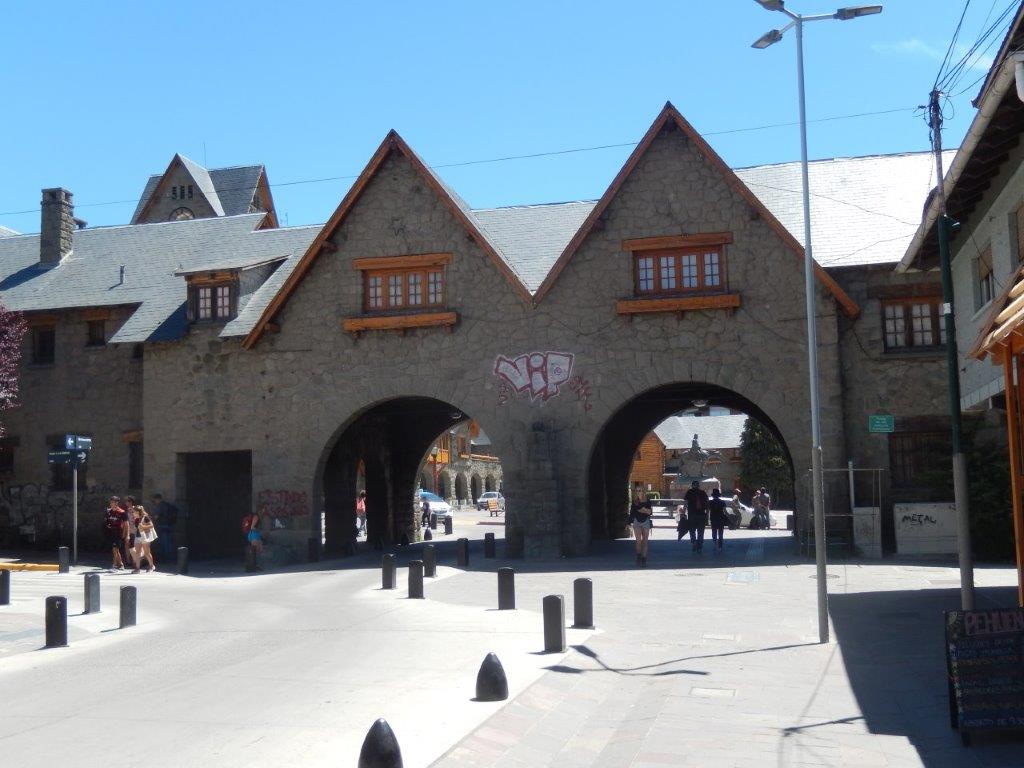 Tourist Office
Tourist Office
Another building which can’t be missed is the Tourist Office which is in the large stone tower.
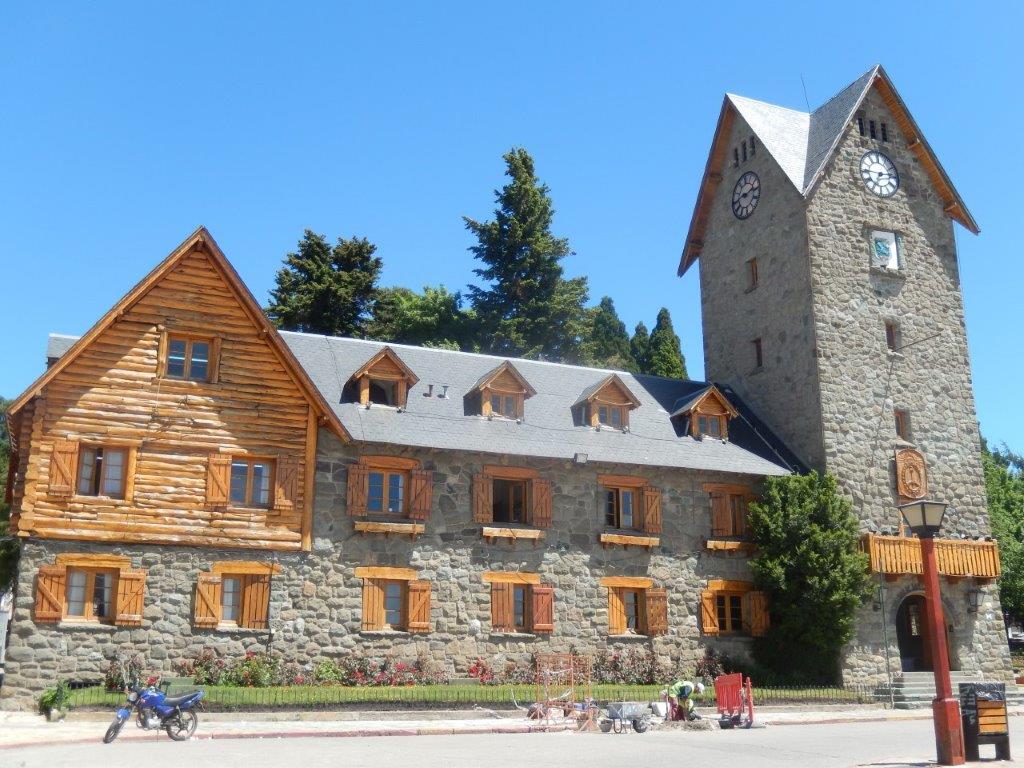 Again the distictive Swiss like/ Alpine like style using a lot of wood is characteristic for the building.
Again the distictive Swiss like/ Alpine like style using a lot of wood is characteristic for the building.
After having absorbed this square like a dry sponge, The Wandelgek walked in the direction of Mitre Street, which is Bariloches’s main shopping street.
He looked for a last time towards the lake, before walking through the double stone arches into…
Mitre Street
Walking through this street which attracts alot of shoppers, ranging from high-end shoppers, food shoppers, souvenir hunters to ski and outdoor shoppers … and dogs…
There were several grocery stores selling all kinds of groceries from tea and coffee to marmnelades and jams and from wodka or Whisk(e)y to local beer and wine.
One of those beers was the local Manush Beer, of which I had seen the brewery somewhere on the lake shore and more important, their tasting room/pub when I first entered Bariloche. I had had no time to search for it yet, but it immediately looked so attractive that I really wanted to visit it and taste some beer. When I did the Circuito Chico roadtrip, a local guide mentioned it too as one of the best places to go for a beer.
Another beer which I saw in some shopping windows, was Blest…
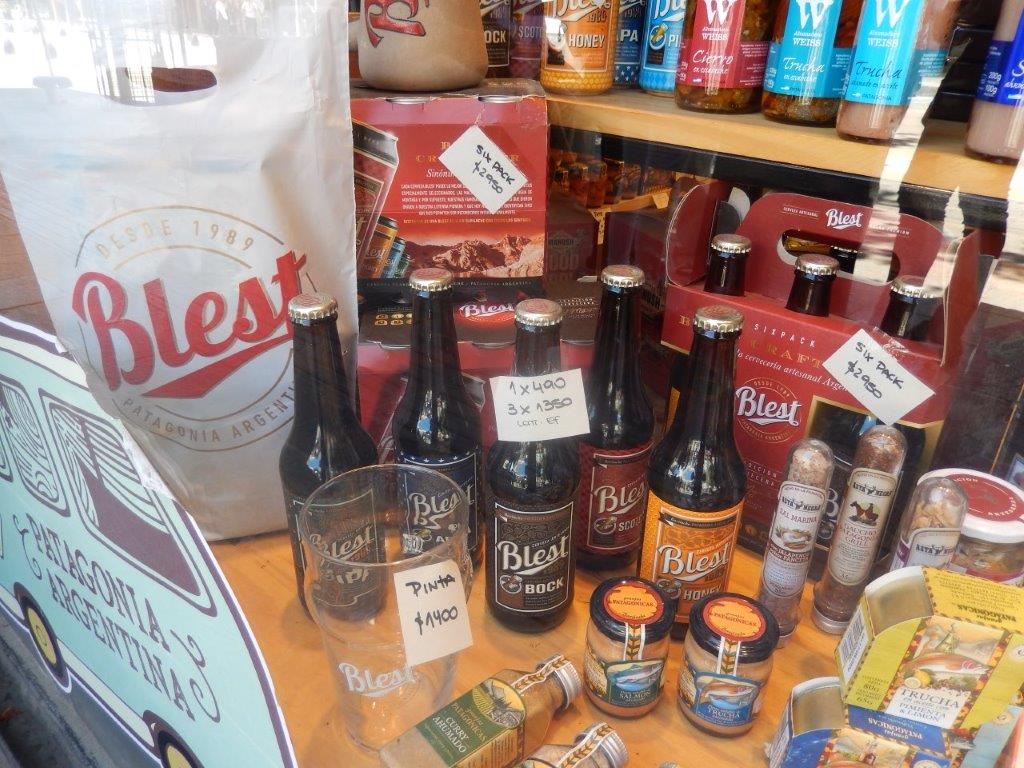 …and then there was the Wesley beer, which was like Blest and Manush from Bariloche.
…and then there was the Wesley beer, which was like Blest and Manush from Bariloche.
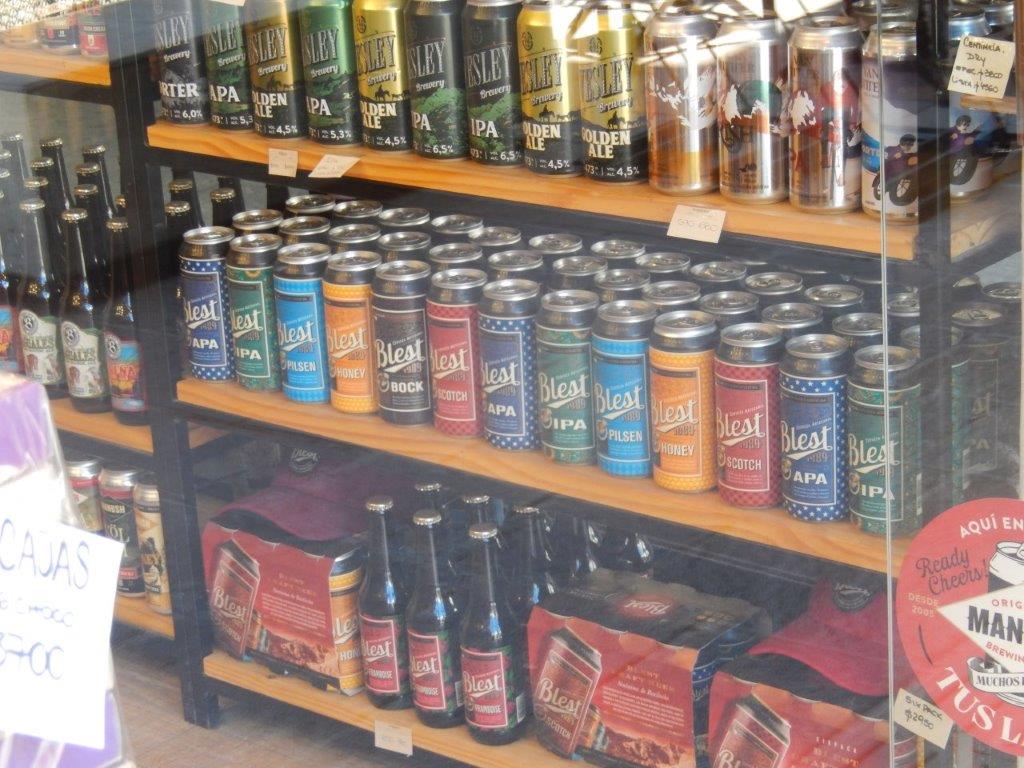 The views on the white capped Andes mountain summits, from Mitre Street were fantastic and a reminder of this towns importance as a ski center…
The views on the white capped Andes mountain summits, from Mitre Street were fantastic and a reminder of this towns importance as a ski center…
After passing another beautifully dressed grocery storeshopping window,…
The Wandelgek searched for Bariloches famous Swiss style Chocolate stores.
Dogs can be chocolate lovers too…at least that is what all those dogs waiting at the door implied…
The Wandelgek first visited the beautiful Torres chocolate store…
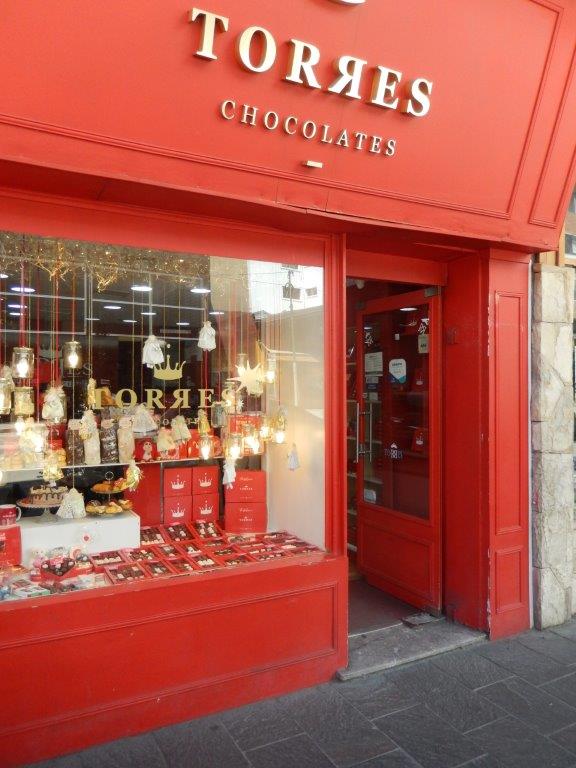 …but the got mesmerized by the larger Mamuschka Chocolate Store. This was sheer chocolate heaven…
…but the got mesmerized by the larger Mamuschka Chocolate Store. This was sheer chocolate heaven…
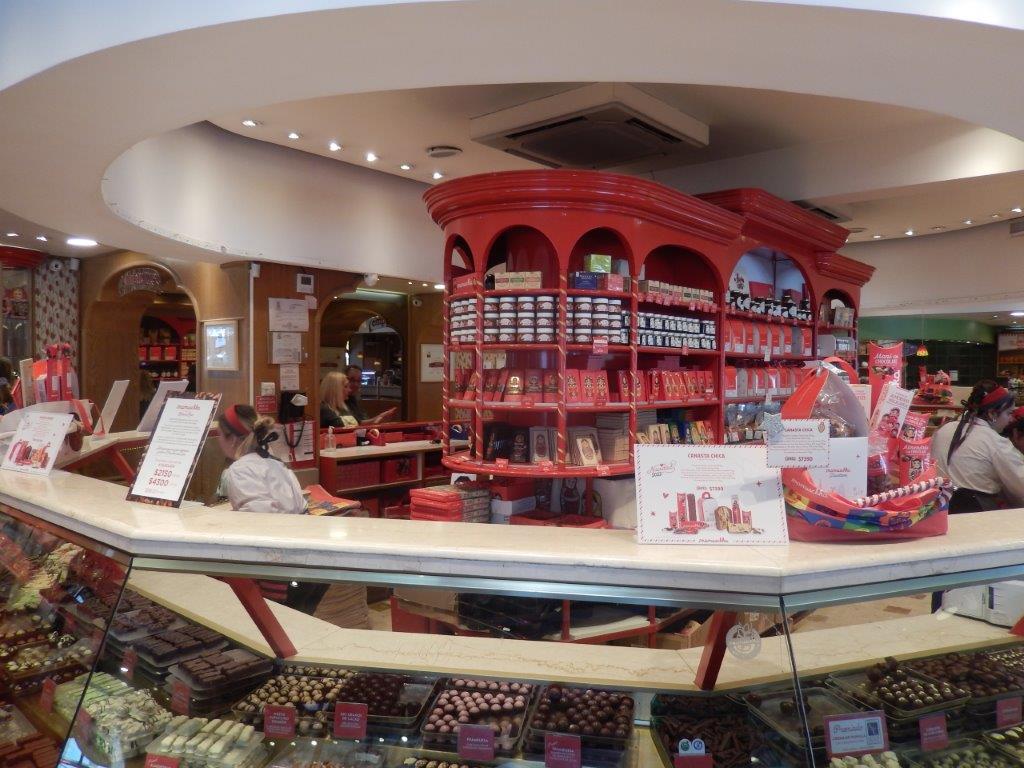 They had a system for customers to go through when buying chocolates. First you needed to announce that you were going to buy, and then you received a number and
They had a system for customers to go through when buying chocolates. First you needed to announce that you were going to buy, and then you received a number and
Next you could go to a counter to order the actual chocolate. This was placed on an order form of which you received a copy, which could be shown at the packaging/wrapping counter where your chocolates were nicely wrapped and send to the payment counter.
Last but not least was the payment counter, where you received your chocolate. The Wandelgek decided to order some different small chocolate pieces of Pur, Milk and White chocolate to test them. The small bon bon was a complimentary gift from the shop. The verdict is that he could not find a difference in quality or taste with real Swiss chocolate. This was great tasting chocolate…
Next The Wandelgek returned to the main Square and started to ascend away from the lake, in a diraction of where he guessed the Manush tasting pub would be. After a bit of dwelling around he found it, but was disappointed seeing it opened at 17.00 o’clock in the afternoon and it was 15.00.
That’s why he decided to visit a nearby chorizo bar to grab a bite…
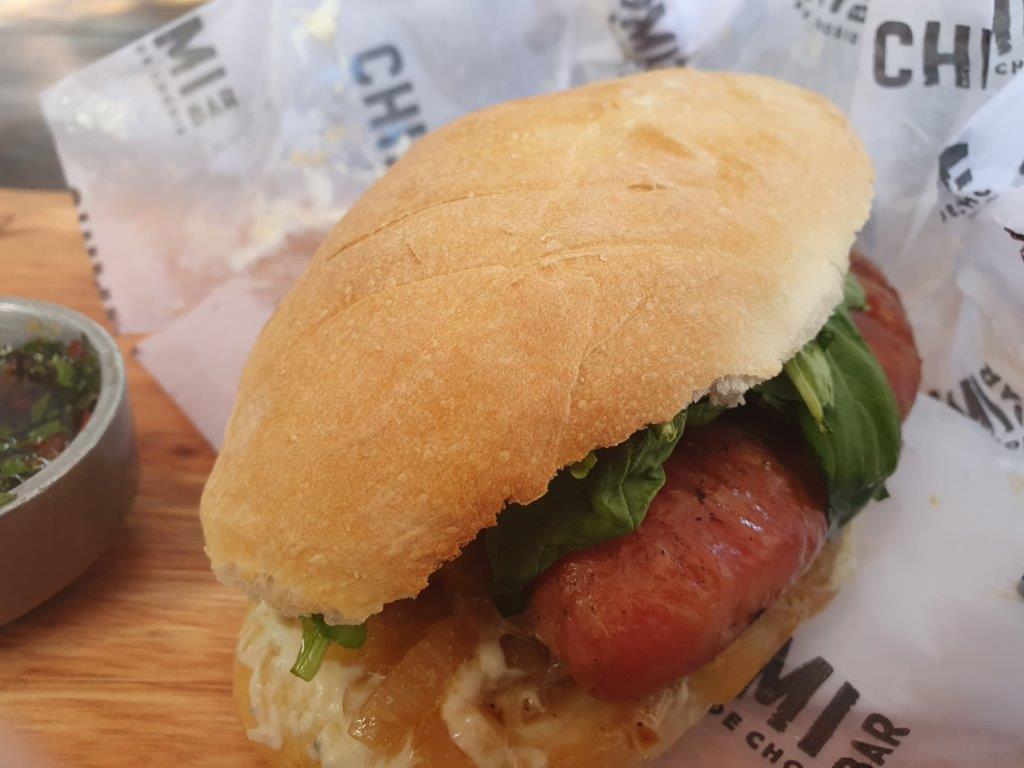 …and a Patagonia Amber beer of course. The Wandelgek had come to like both and had started eating these already at the start of his journey in Buenos Aires.
…and a Patagonia Amber beer of course. The Wandelgek had come to like both and had started eating these already at the start of his journey in Buenos Aires.
Around 17.00 he went to Manush to spend the last hours in Bariloche, before he was going to travel further south…
Manush
It was actually a pity that The Wandelgek had not been at Manush earlier (=every evening of his stay in Bariloche), because it was indeed the best local place to be for beer tasting. The list of European style beers was simply phantastic 😀
He went for the Scotch Ale (which is a red beer) and the Stout…
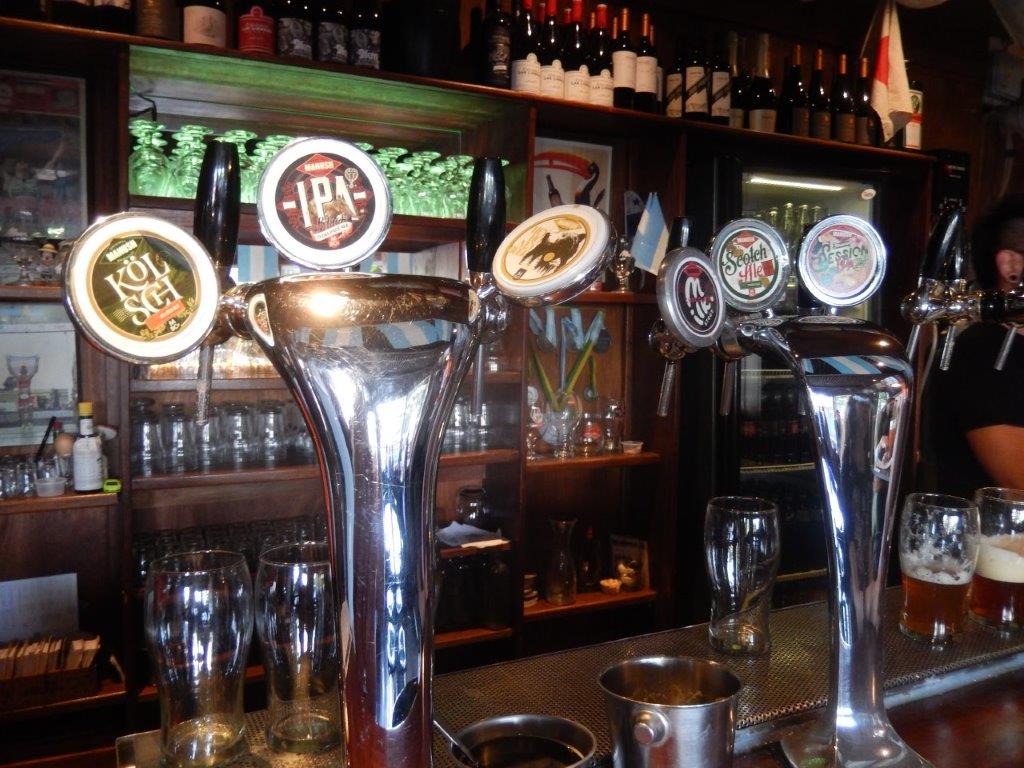 Lucky enough he had a few hours left before he had to check out from his hotel and had to leave for the airport. There was still a lot of effect from the Corona Crisis to be felt in airport travel in the last months of 2022. The plan had been to stay another night (which would have enabled a longer stay at Manush too), but the direct flights between San Carlos de Bariloche and El Calafate had been canceled, which meant rebooking flights and travelling the evening before to Buenos Aires and transfer on a flight to El Calafate from there.
Lucky enough he had a few hours left before he had to check out from his hotel and had to leave for the airport. There was still a lot of effect from the Corona Crisis to be felt in airport travel in the last months of 2022. The plan had been to stay another night (which would have enabled a longer stay at Manush too), but the direct flights between San Carlos de Bariloche and El Calafate had been canceled, which meant rebooking flights and travelling the evening before to Buenos Aires and transfer on a flight to El Calafate from there. 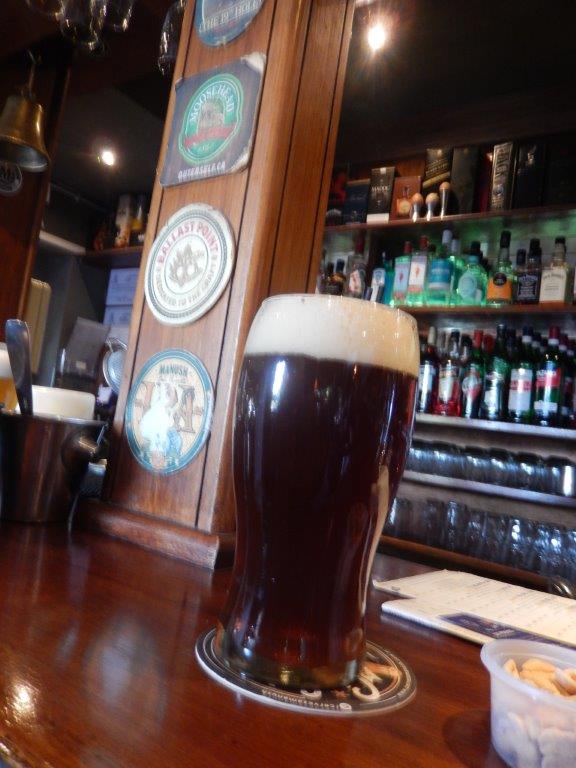 Luckily the travel advisor took care of those administrative things very well and The Wandelgek coul simply enjoy his beers before the night flight.
Luckily the travel advisor took care of those administrative things very well and The Wandelgek coul simply enjoy his beers before the night flight.
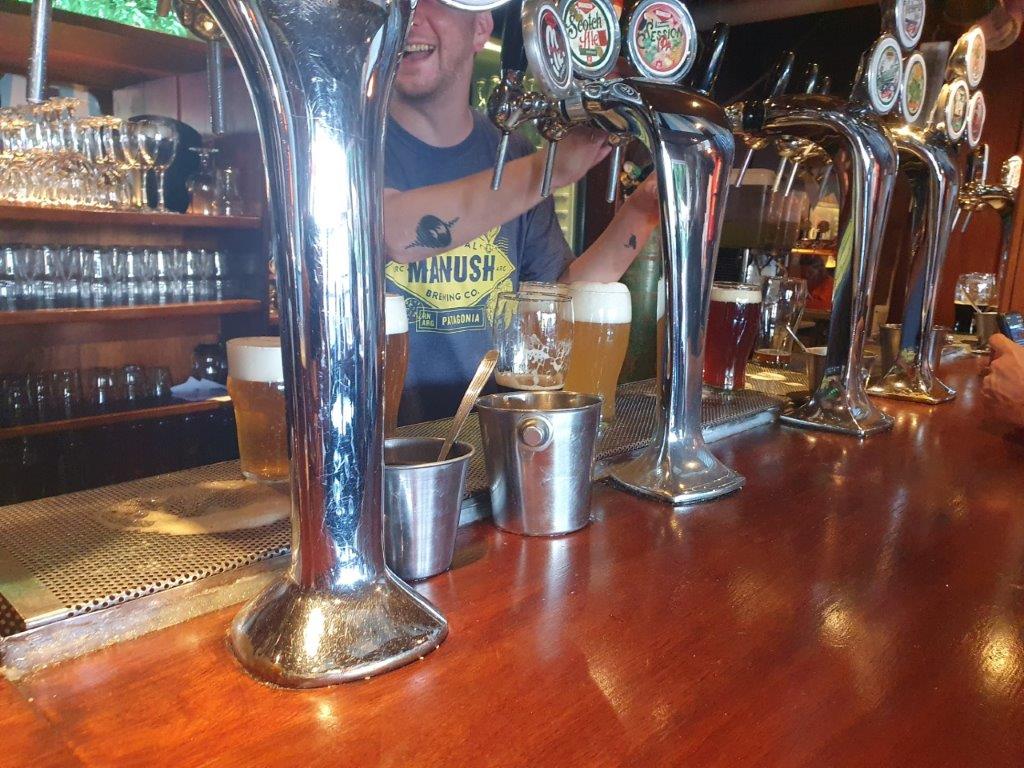 The Wandelgek was impressed by the quality of the beers brewn at Manush and asked the barman which beers they had and after a short conversation in which he explained a bit more, he suddenly offered him a bunch of beer coasters of different Manush Beer types, which he gratefully accepted. A souvenir of Bariloche is always welcome 😉
The Wandelgek was impressed by the quality of the beers brewn at Manush and asked the barman which beers they had and after a short conversation in which he explained a bit more, he suddenly offered him a bunch of beer coasters of different Manush Beer types, which he gratefully accepted. A souvenir of Bariloche is always welcome 😉
Tip: If you’re a (European) Beer style buff like I am than visit Manush Centro!
Then The Wandelgek left and prepared for the flight south (well…first north and then south).
He arrived at Buenos Aires airport around midnight and then changed plane towards the south. At 8.00 next morning he arrived in El Calafate, which was also the time he would have arrived after a direct flight, so no harm done, accept him being a bit more tired than usual…

